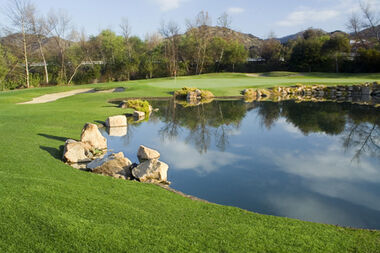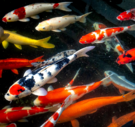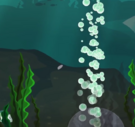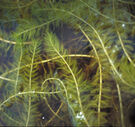
Pond owners around North America are all wrestling with the issue of how to deal with weed and algae control. From small bodies of water that are less than 2 acres in size, to district water operators who manage miles of irrigation canals, there are many important considerations in dealing with the issue of weeds and algae:
Sufficient clean water and accessibility to it is a major concern throughout the world. As drought conditions worsen in many parts of North America the demand and importance of fresh, clean water becomes greater and greater.
Agriculture producers such as vineyards, crop farmers, and cattle ranchers require fresh clean water on a consistent basis. These producers are digging out ponds, tanks, and dugouts as primary or secondary sources of water for their operations. Their irrigation or watering ponds capture rain water and they will draw from them during times of low demand. In some markets the price per/gallon of water is higher in drier seasons when demand is higher. In some cases, farmers are trucking in water at a cost as high as petroleum in order to keep their farm afloat during severe drought conditions.
Many vineyards or hobby farms attract tourism, and their ponds add to the customer experience. An ugly, smelly pond that is covered with algae and weeds certainly doesn't create an attraction for your guests. These ponds require attention and action but farmers tend not to have the time or knowledge to deal with them. They also don't want to spend money hiring expensive consultants who analyze the aquatic vegetation type and provide a stop gap measure to fixing the real issue at hand.
Many of these ponds develop algae and weed problems because these farm pond owners do not know how to manage and maintain them. The aquatic vegetation tends to clog drip irrigation emitters and sprinkler heads and can cause the pond to stagnate and develop blue green algae. These types of algae are consider a health risk are required to be closed for use.
There are several aquatic vegetation types to be aware of. The most common in North America are filamentous algae, blue green algae, Chara, and Duckweed. Determining which herbicides or algaecides to use to kill off the aquatic vegetation type is another challenge. One could go through a laundry list of toxic pond chemicals and never find one that will meet all the right requirements. Many aquatic plant species become resistant to the treatments that are applied, so what works one year may not work the next.

It can become quite complex especially in states or regions of North America that specific data is required in registering an aquatic herbicide before using.
Administering herbicides and algaecides for the control of aquatic vegetation can be challenging. It can also be costly and dangerous if you don't know what you are doing. This is why Natural Pond Care is the "The Way of the Future". Nature’s Pond is an all natural solution that was created to reduce the effort, complexity, and annual expense of caring for water, for the people who need it. By providing agriculturists with an easy three-step solution that Renews, Revives, and Removes, Nature’s Pond products are helping people across North America.
To learn more about Nature’s Pond products check out Nature’s Pond Conditioner, Nature’s Pond Aeration, and Nature’s Pond Cutter ‘N’ Rake.
References:
Smith, R., Roncoroni, J.A., Blodget, D.C., (May, 2011). California Weed Science Society Journal. 7(1). 1-5.
Photos and captions have been provided by Steve Fender of Fender’s Fish Hatchery since 1956, Baltic, OH, largest and oldest fish hatchery in the Midwest. Retrieved from: www.fendersfishhatchery.com
This blog discusses pond issues and solutions for Homeowner Associations.

This blog discusses the history of koi, tips and care suggestions, and how to keep a koi pond clean and clear.

Aeration Systems and the Benefits of Bottom UP Aeration…
A quick look at how Nature's Pond Conditioner works for your pond!

What is an Ecosystem? “An ecosystem is a geographic…